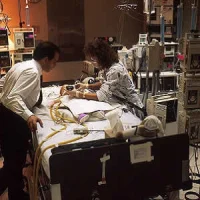According to new research by Claire K. Ankuda, MD, MPH, with the Robert Wood Johnson Clinical Scholars Program at the University of Michagan Health System in Ann Arbor, and colleagues, regions that have greater primary care physician involvement during the last six months of life tend to have lower intensity, lower-cost end-of-life care. The research is published in the Annals of Family Medicine.
See Also: End-of-Life Care in the ICU: WFSICCM Task Force Report
The researchers used data for 306 U.S. hospital reference regions involving 1,107,702 beneficiaries with chronic disease who died. Their analysis showed that chronicially ill adults living in regions with greater primary care physician involvement required less ICU care during the last six months of their life and less than 10 physicians in their care. These regions also had less costly end-of-life care.
The research also shows that HRRs with greater primary care involvement had lower Medicare spending during the last two years of a patient's life ($65,160 versus $69,030). In addition, patients had to spend fewer days in the ICU during the last six months of their life (2.9 days versus 4.3) with less hospice enrollment (45 percent versus 50 percent).
The authors thus conclude that greater primary care physician involvement is associated with less hospice use and that these new findings could help optimise the role of primary care physicians in care at the end of life.
Source: American Academy of Family Physicians
Image Credit: Wikimedia Commons
Latest Articles
Primary Care Physician Involvement, intensive care, end-of-life care
Greater Primary Care Physician Involvement, Less costly, Less intensive care










